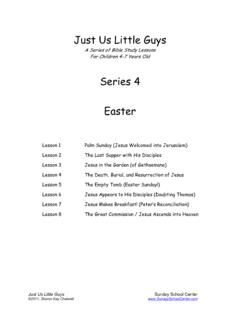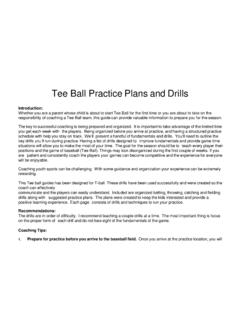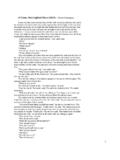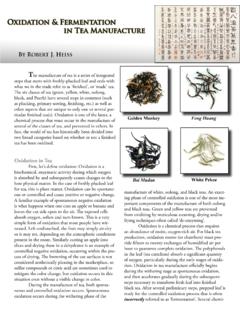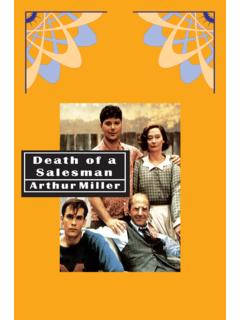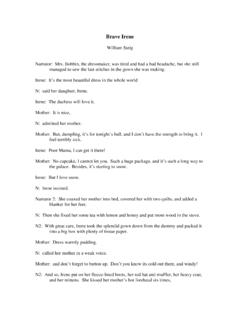Transcription of In Your Childcare Centre - City of Canterbury
1 Sustainability Education for Childcare Centres In Your Childcare Centre This project is funded by the NSW Government's environmental Trust This case study will help you bring sustainable habits and education into your Childcare Centre . What is little green Steps? little green Steps brings sustainability to children's In 2009/10, Sydney little green Steps worked with centres through curricula, staff/community workshops children's centres run by Canterbury , Hurstville, and retrofits of centres' physical space. This whole of Leichhardt, Waverley and Woollahra councils for Centre ' aproach includes: one year. The project achieved behavioural and infrastrucutral changes reducing energy, water, waste, Engaging staff in the vision of early childhood toxins and general consumption. Centre staff received education for sustainability' professional development and resource kits to support Environmental audits and action plans their continued work.
2 Children learnt through hands-on Workshops for teachers and Centre community education, observation and participation. Families were Resources kits and funding to support involved through meetings, workshops, newsletters environmental education and actions and displays. Implementation of educational, infrastructural, and management initiatives. Why Do little green Steps? The little green Steps project provides a way for sustainability to be integrated into the workplaces of Childcare centres, inspiring and empowering children, parents and Childcare workers to initiate and achieve tangible sustainability. Comments from Participants . THE. WORKSHOP. HELD AT WOOLLAHRA. PRESCHOOL WAS. INSPIRING. IT IS ALWAYS. GOOD TO MEET WITH. (WE. OTHER PEOPLE IN OUR. GOT) A. FIELD AND SHARE IDEAS. WORM FARM. AT THE Centre AND PRACTICES.. AND IT IS STILL. WORKING! . THE little . RESOURCES green STEPS HAS. DEVELOPED PROVIDED THE Centre WITH MUCH- BY PROJECT NEEDED RESOURCES TO EDUCATE STAFF.
3 OFFICER ARE AND CHILDREN ABOUT THE ENVIRONMEN T. IT HAS. FANTASTIC. ALSO PROMOTED AWARENESS OF AND MADE SMALL. THEY MAKE OUR CHANGES TO THE Centre PHYSICALLY. IT IS GREAT. JOB EASIER. TO SEE UPPER MANAGEMENT AND OTHER AREAS OF. COUNCIL BEING MADE AWARE OF THE IMPORTANCE. OF THIS ISSUE, AND IT HAS BEEN GREAT TO HAVE THEIR. SUPPORT AND INPUT.. (WE DID) HANDS-ON THINGS WITH THE. CHILDREN, ESTABLISHING OUR GARDENS. AND MAINTAINING GOOD PRACTICES.. little green STEPS GALVANIZED. THOSE MEMBERS OF THE TEAM WHO WERE RELUCTANT TO. TAKE UP SUSTAINABLE PRACTICES. IT MADE THOSE IDEAS. MORE TANGIBLE AND GAVE US CONSTRUCTIVE WAYS TO. IMPLEMENT THESE IDEAS IN A CHILD-FOCUSED WAY.. SUSTAINABILITY. WILL NOW BE AN ONGOING ISSUE. TO ADDRESS - VERY VALUABLE. EDUCATION FOR OUR FUTURE.. WHEN THE PROJECT BEGAN, THERE WAS. QUITE A LOT OF ENTHUSIASM. I FELT THIS, AND. BEGAN A LOT OF MY OWN INITIATIVES WITHIN THE. CLASSROOM. GAUGING THE CHILDREN'S RESPONSES.
4 AND INTERESTS AND RESPONDING TO THESE HAS. BEEN VERY ENJOYABLE.. little green STEPS GAVE US SUPPORT. AND MOTIVATED OUR STAFF TO DO. MORE IN THE WAY OF SUSTAINABILITY.. Participant Survey Results 100% of surveyed participants said little green Steps helped them develop professionally to deliver environmental education. 100% of surveyed participants said little green Steps helped them develop professionally to run a more sustainable Childcare Centre . 100% of surveyed participants said since starting little green Steps they had delivered more environmental education. 100% of surveyed participants said since starting little green Steps their Centre had operated more sustainably. 100% of surveyed participants said little green Steps made them more likely to contact parents / council staff / or other networks for support, resource and knowledge sharing on environmental issues. 100% of surveyed participants said they would continue initiatives for sustainability after the little green Steps program.
5 How Can I Do little green Steps? Even if you don't have a grant, you can still do little green Steps in your Centre . It just takes 3 steps! step 1. Talk to the staff in your Childcare Centre . Cover three points . do they want to provide a healthy environment for future generations, with good water, soil, air, climate, biodiversity etc? does this mean we need a society that values nature and resources respectfully? if early childhood is when such core values are established, how can early childhood teachers help build a healthy society and planet? step 2. As a group, look through the lists of actions little green Steps participants have completed below. As you read . celebrate the actions you are already doing choose actions you would like to do tailor and imagine actions for your own Centre 's needs and philosophies collate and commit to actions that are realistic in your Centre and that people are motivated about.
6 You've just made your very own action plan. It's that easy! step 3. Do your actions in whatever order suits you. Remember to seek support and celebrate as you go! Actions that little green Steps Participants have Completed Previously Use these ideas as a springboard to compile your own lists of actions. Nature . Check Initiative Box Hold a backyard blitz'. Purchased plants with help from children on excursion to a nursery. Extra potted plants for indoors and out. Chosen to be hardy and safe. (Check Kidsafe publication Plants for Play Spaces'). Staff informed of watering, light and feeding needs for each plant ( little label on pot). Constructed children's gardens through parents, children and staff working bees; during the day with kids, or as part of workshops for staff and parents: - Vege/Kitchen garden - Fairy garden - Mexican-themed garden - No dig garden - Sensory herb and flower garden for colour, smell and texture - Raised garden with Perspex section for viewing roots.
7 Note Always use lots of perennials to ensure low maintainence and long- term growth, yet leave spaces for shorter-term children's projects around the edges, like growing carrots, lettuce, peas, beans etc. Tepee cubby house constructed from bamboo grown at the Centre . Covered with hessian or vines. Soil quality in struggling garden beds improved by regular use of worm juice, Seasol, compost and mulching with leaves (previously sent to landfill) with help from children. Major renovation of yard. Much soft fall replaced with terraced gardens and textured sensory paths etc. Increased prominence of worm farm by moving it to a more central but shaded location, and incorporating it into the children's daily routine, with pictorial signage of what does and doesn't go in etc. Water . Check Action Savings (KL/year). Box Half-flush conversion on student toilets integrated into Large educational opportunities with the kids.
8 Converted staff toilets to half flush. Small Bed sheets labeled so they can be reused for the same child on Large consecutive days. Sheets in batches twice a week instead of every day. Other loads consolidation also. Taps-off lessons. Put mechanical timers on youngest kids' taps. Large Repaired leaks. Large Installed full-sized water tank incorporating any planned If plumbed into laundry/toilets, extensions/building works. large savings, otherwise small Increased mulching of gardens to reduce watering needs. Fixed rain-water tank. Water play and gardening water are now used from the tank and not from drinking water. Garden watered using rain-water tank. (Tank was there previously but not used.). Waste . Check Action Box Purchasing less paper due to conversion to electronic journals, newsletters, billing etc and general reuse of one-sided paper. Purchasing less cardboard due to increase in reuse and resourcefulness.
9 Purchase only recycled paper towels and recycled toilet paper. The Centre has increased reuse of its own useful materials such as cardboard boxes, one-sided paper and shredded paper from the office, bottle tops from the kitchen etc. green trays set up in each craft area to facilitate reuse of one-sided paper. Kids trained to use them for one-sided paper. Increased creative, resourceful reuse of materials from home in art projects. Organised regular supply of one-sided paper and other craft materials from parents, local businesses, library or council. Exploring paper production and recycling through highly kinaesthetic learning. Paper-making activity with kids using shredded office paper and other paper unsuitable for reuse in other ways. Excursion to reverse garbage to purchase craft supplies and investigate Reduce Reuse Recycle with kids. Excursions to Cooks River to clean up litter, which was then used to make art.
10 Check Action Box Set up consistent recycling and reuse system throughout Centre : craft/reuse boxes in each children's room where children can put in and take out materials such as containers and cardboard for reusing as craft. Each room has set up a tray for one-sided paper. Small, colour-coded recycling bins in each room or in a central location. Make sure one-sided paper and recycling bins are set up in staff and office rooms also (walk the talk!). Two food scrap containers on every meal trolley, one for compostable and one for non- compostable. Children assist in putting scraps into the correct containers after each meal. Children involved in emptying the compostable container into the compost bin. Children are introduced to the system with a game where they choose where different example items must go. Children will then be responsible for using the system in an ongoing way, deciding where to get/put items they work with.
